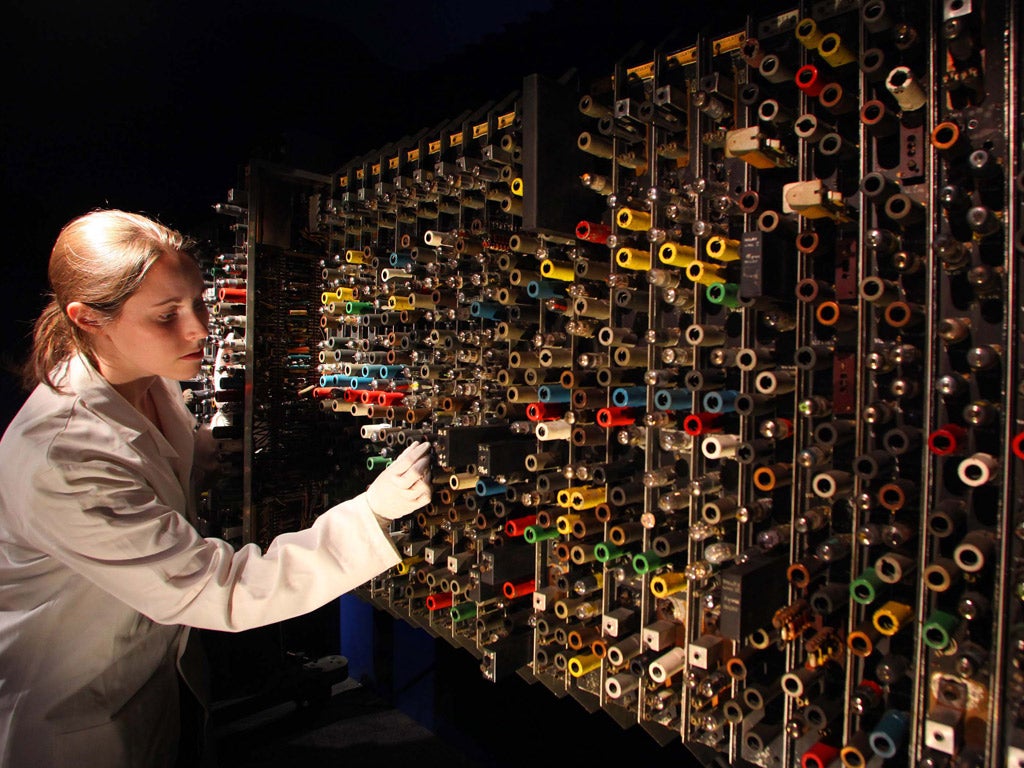How the Turing Test was passed…and why it matters
A computer posing as a Ukranian teenager has fooled enough people to be considered intelligent. What's next?

Your support helps us to tell the story
From reproductive rights to climate change to Big Tech, The Independent is on the ground when the story is developing. Whether it's investigating the financials of Elon Musk's pro-Trump PAC or producing our latest documentary, 'The A Word', which shines a light on the American women fighting for reproductive rights, we know how important it is to parse out the facts from the messaging.
At such a critical moment in US history, we need reporters on the ground. Your donation allows us to keep sending journalists to speak to both sides of the story.
The Independent is trusted by Americans across the entire political spectrum. And unlike many other quality news outlets, we choose not to lock Americans out of our reporting and analysis with paywalls. We believe quality journalism should be available to everyone, paid for by those who can afford it.
Your support makes all the difference.You are sitting in front of a computer screen which is split down the middle. One half is controlled by a human, one half by a machine – neither of which you can see. You then have five minutes in which to decide which is, which simply by typing questions to both. This is the iconic and controversial Turing Test.
I have spent my life working in Artificial Intelligence – and among other dubious claims to fame, am the world’s first human cyborg. So I am not surprised that debate has been raging since my colleagues at the University of Reading claimed that the test was finally passed after decades of trying.
Alan Turing – the father of modern computing – first devised the question and answer game in a seminal 1950 paper, “Computing, Machinery & Intelligence”. He proposed that “...if, during text-based conversation, a machine is indistinguishable from a human, then it could be said to be 'thinking' and, therefore, could be attributed with intelligence."
He also suggested that by the year 2000 the “average interrogator will not have more than 70 per cent chance of making the right identification after five minutes of questioning.”
For years, judging a Turing Test was not a challenge. But now it is a different story. Machines are much better at structuring flowing conversations and mimicking humans – with random, quirky and off-beat answers.
That’s why the designers of the winning machine gave their machine the persona of Ukrainian teenager, Eugene Goostman – cocky enough for "him" to claim he knows anything but his age ensuring that he does not know much.
Some have argued that similar tests have already been passed – but ours was a true Turing Test as stipulated by the man himself. We had 30 judges and five machines taking part in 300 conversations. It was independently verified and, crucially, the questions and topics were unrestricted unlike other versions.
Some have argued that a five-minute conversation is not long enough to form an opinion on which is human. That may be true. Longer would indeed give judges more time to gain clues. But these were the parameters set by Turing himself which have remained consistent for all Turing Tests since.
And others have claimed that a computer posing as a 13-year-old boy ‘cheats’ by confusing the judge into thinking non-sequiturs, or lack of knowledge, is due to tender years rather than intellectual ability.
But the judges were not told he was a teenager and Turing never suggested that artificial intelligence would have to pose as an adult – just that it fooled people to thinking it was human. Judges were free to ask the subjects any questions they liked in unrestricted conversations – and Eugene was clearly capable of holding its own.
The fact is this landmark shows us is that programmers are now more sophisticated at producing computers that can act like people.
We should not overstate the results. Two thirds of our judges were still not fooled, which shows the machines still have some way to go before they take over the world.
But it shows artificial intelligence is showing the appearance of getting cleverer. And it has practical benefits in combating cybercrime. It only takes a tiny fraction – let alone 30% – of phishing emails to trick victims to create a multimillion pound fraud. The Test helps us understand more fully how online, real-time communication can fool humans.
Alan Turing was a pioneer, genius and visionary. He believed the test would be passed in time but even he would struggle to comprehend the size and scope of today’s internet. And as a man whose greatest achievements came in helping to defeat the Nazis would have understood, technology can be used as a force for good, as well as for evil.
Join our commenting forum
Join thought-provoking conversations, follow other Independent readers and see their replies
Comments